Harp seals are an iconic species of the Arctic region, known for their white fur coats and exceptional swimming abilities. Despite being a popular tourist attraction in Canada, these marine mammals face numerous threats from predators that pose a significant risk to their survival.
Understanding the natural enemies of harp seals is crucial to developing effective conservation strategies that can help mitigate the impact of human activities on this vulnerable species.
Several animals prey on harp seals throughout their life cycle. Polar bears are one of the most well-known predators of harp seal pups, as they rely heavily on them during the spring breeding season when they emerge from dens after hibernation. Killer whales also hunt adult harp seals, using their intelligence and strategic hunting techniques to capture even fully grown individuals in open water. Additionally, walruses and arctic foxes have been observed preying on young harp seals during their early stages of development.
The complex interplay between predator-prey dynamics and other ecological factors affecting harp seal populations underscores the need for continued research into ways we can protect these magnificent creatures from extinction.
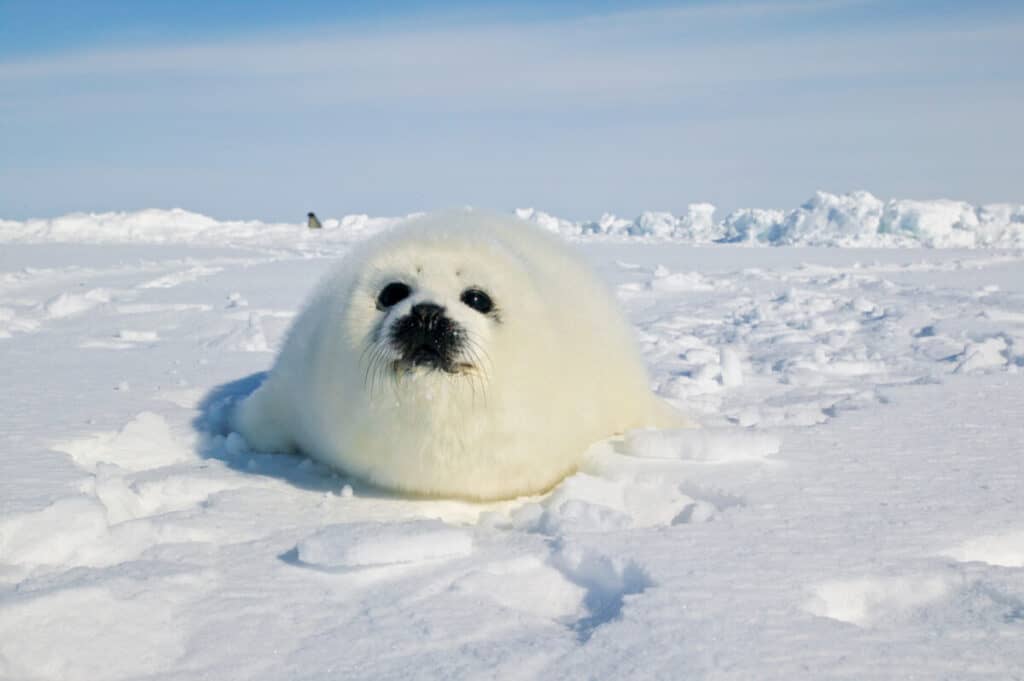
The Threats Facing Harp Seals
Harp seals (Pagophilus groenlandicus) are marine mammals that inhabit the Arctic and sub-Arctic regions. These animals face numerous threats, including human activities such as hunting, oil spills, and climate change.
Climate change has emerged as a significant threat to harp seals in recent years. The melting of sea ice due to rising temperatures impacts the availability of food sources for these animals, which directly affects their survival rates.
Another key factor affecting the survival of harp seals is overfishing of their prey species. Harp seals feed mainly on fish and crustaceans, particularly cod and shrimp. However, commercial fishing practices have led to declines in populations of these important species, reducing the available food supply for harp seals.
This reduction in food availability can have severe consequences for seal populations, leading to malnourishment and even death from starvation. Therefore, it is crucial to address both climate change and unsustainable fishing practices to ensure the continued existence of harp seals in their natural habitats.
How Big Are Seals: Unveiling the Size of Aquatic Mammals
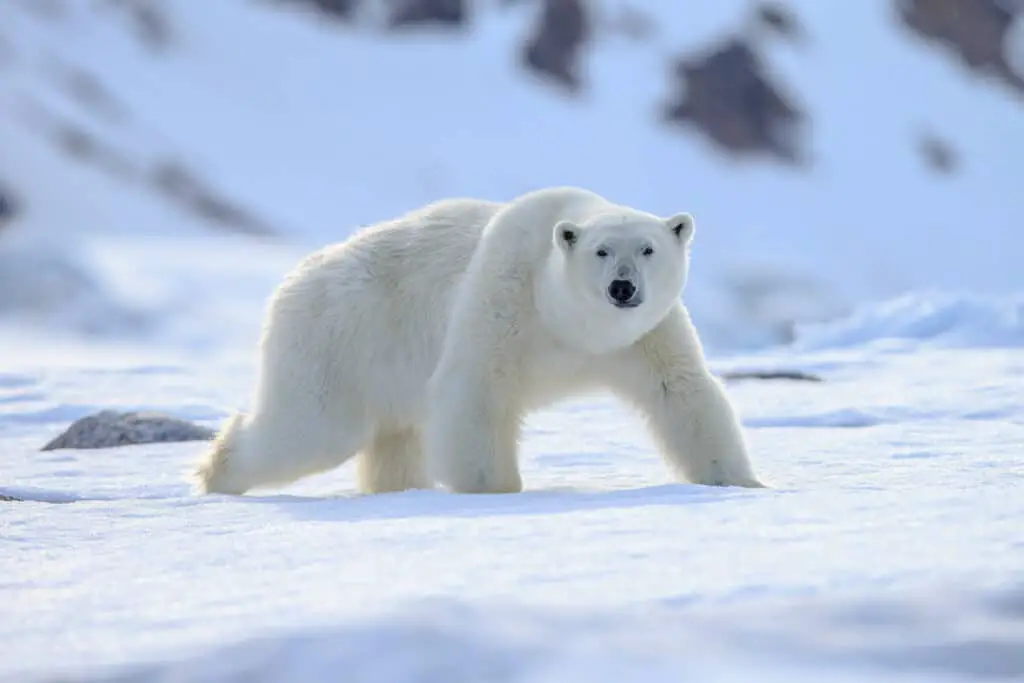
Polar Bears
One of the main predators of harp seal pups is the polar bear. These bears rely heavily on ice to hunt and feed, so they are found in high numbers near areas with abundant prey. They generally feed on juvenile harp seals.
The Arctic sea ice reduction due to climate change has impacted their hunting grounds, forcing them to travel further distances to find food. As a result, there have been increased sightings of these animals near breeding colonies of harp seals.
The impact of melting ice on polar bears has led to a higher demand for alternative sources of food which includes harp seals. Polar bears use floating platforms made from pack ice as locations for ambushes when hunting young seals during nursing time. In some areas, over 50% of all newborns can be killed by polar bears before they even learn how to swim.
Although this predation may seem alarming at first glance, it is essential in maintaining balance within the ecosystem. However, continued reductions in Arctic sea ice could lead to an imbalance that threatens both the harp seal population and the survival of polar bears themselves.
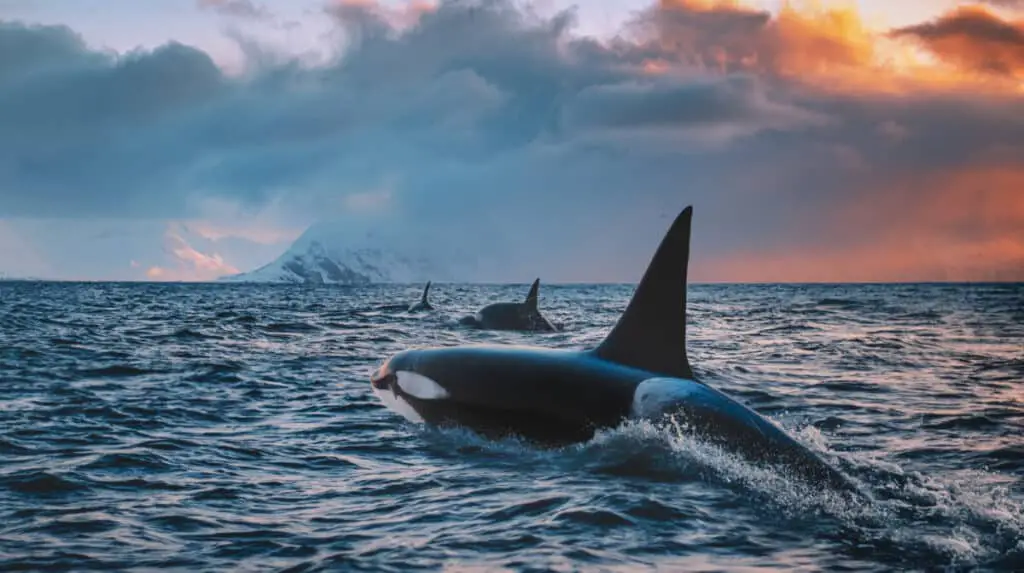
Killer Whales
Polar bears are well-known predators of harp seal pups, but adult harp seals face a different threat from killer whales. These marine mammals use unique hunting techniques to prey on adult harp seals, making them another significant predator in the Arctic ecosystem.
Killer whales typically hunt in pods and use their intelligence and teamwork to catch their prey. They often work together to create waves that wash over ice floes where the harp seals rest, causing them to fall into the water where they can be easily captured. Killer whales may also herd groups of adult harp seals towards each other or trap them against the ice edge, increasing their chances of success.
As apex predators, killer whales have an important role in regulating populations of their prey species and maintaining balance within the Arctic food web. However, their impact on harp seal population dynamics is still not fully understood and requires further research.
As with any predator-prey relationship, there are complex interactions between harp seals and their natural enemies that shape the ecology of the Arctic region. While polar bears primarily target young harp seal pups on land, killer whales rely on innovative tactics to capture adults in open water environments. Understanding these diverse hunting strategies is critical for predicting how changes in climate and other factors may affect both predator and prey populations over time.
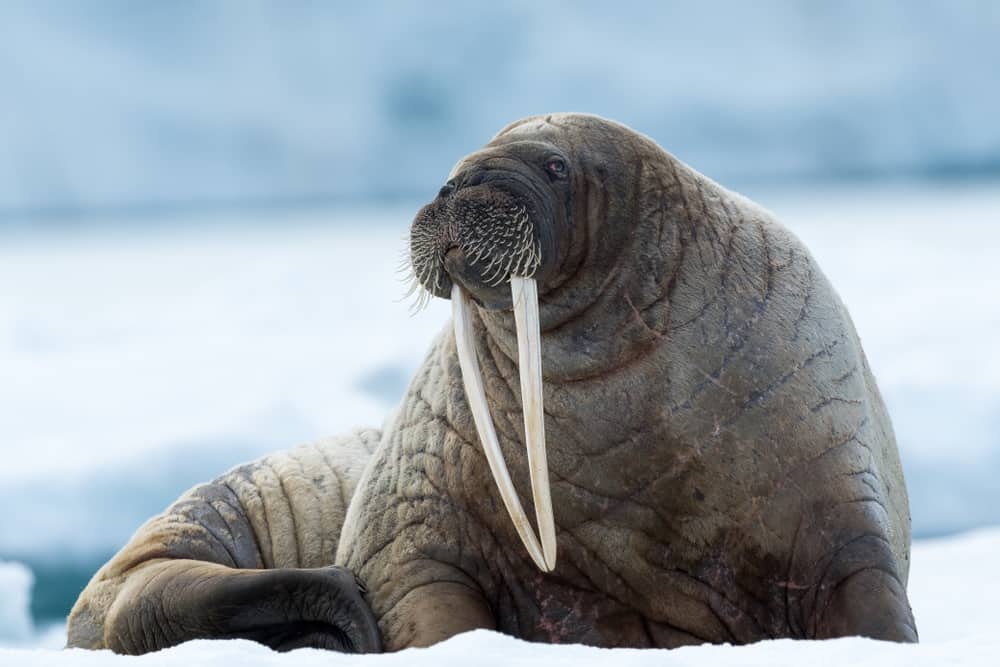
Walruses
Walruses are one of the predators of harp seals, particularly targeting young and vulnerable individuals. Harp seal-walrus interactions have been studied extensively in recent years to understand the impact of walrus predation on harp seal populations.
Studies show that walruses actively seek out areas where newborn harp seals reside, such as sea ice edges or shallow waters near breeding grounds. Once they locate a group of young seals, they use their powerful tusks to break through the ice and pull them out of the water.
The impact of climate change has also affected this interaction since less sea ice makes it easier for walruses to access these areas, increasing their chances of preying on harp seals. As such, understanding how walruses interact with harp seals is important for conservation efforts aimed at protecting these marine mammals from further population decline due to predation.
The increased knowledge gained from studying harp seal-walrus interactions can inform management strategies aimed at reducing predation by walruses on vulnerable harp seal populations. This information can help create measures to protect breeding grounds and reduce human activity in areas where both species coexist, reducing potential conflicts between humans and wildlife.
It highlights the importance of considering predator-prey relationships when making decisions about managing marine mammal populations in an ever-changing environment influenced by climate change.
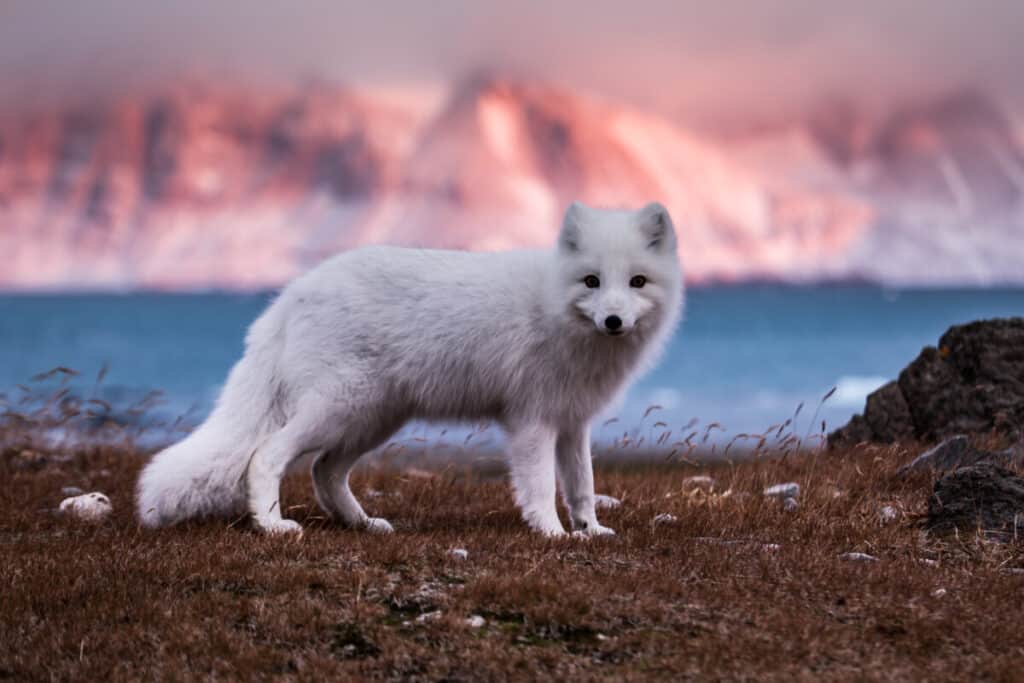
Arctic Foxes
Walruses are known to prey on young harp seals, but they are not the only predators of these marine mammals. Another predator that preys on seal pups is the Arctic fox. The Arctic fox can be found in the same areas where harp seals breed and give birth, making them a significant threat to their survival.
Arctic foxes have a unique hunting strategy when it comes to harp seal pups. They will wait until the mother leaves her pup alone on the ice before attacking it. This usually happens during late spring or early summer when the ice begins to melt, and the seal pups start exploring their surroundings.
Once an Arctic fox spots a vulnerable pup, it will quickly pounce on it, killing it with a quick bite to its head or neck. Despite being smaller than other predators such as polar bears and killer whales, Arctic foxes pose a severe threat to harp seal pup survival due to their cunning hunting tactics and ability to sneak up undetected on their prey.
Arctic fox hunting has been observed by researchers studying harp seals’ behavior for years, leading scientists to understand more about how this predator impacts populations of these marine mammals. While some may argue that natural predation helps keep ecosystems healthy by controlling population sizes, others point out that overhunting by humans coupled with increasing threats from climate change could potentially push certain species towards extinction.
Therefore, understanding and monitoring the impact of predators such as Arctic foxes play an essential role in conservation efforts aimed at preserving these iconic animals for future generations.
The Importance Of Predator-Prey Dynamics
Understanding predator-prey dynamics is essential for maintaining a stable ecosystem. The interaction between predators and their prey shapes the food chain dynamics, which ultimately affects every organism in the ecosystem.
Harp seals are no exception to this rule. As they occupy an important position in the Arctic marine food web, it is crucial to explore how these animals have adapted to survive against potential predators. Exploring adaptation among harp seals reveals that these marine mammals possess unique physical characteristics that help them evade predators such as polar bears and killer whales. For example, they have thick layers of blubber under their skin that provide insulation from cold water while also making them difficult targets for predators to bite through. Additionally, harp seals can swim up to 20 miles per hour underwater, allowing them to escape danger quickly.
Food chain dynamics dictate that if one species becomes overpopulated or extinct, it will directly affect other organisms in the same environment. Thus, understanding how predator-prey relationships operate within ecosystems helps scientists predict changes in population size and distribution of different animal groups. This information is particularly relevant when studying endangered or threatened species like harp seals whose survival depends on maintaining a balanced ecosystem.
Conservation Strategies For Harp Seals
Sustainable hunting has been proposed as a conservation strategy for harp seals. This approach allows the controlled and regulated harvesting of the species, ensuring that populations are not depleted beyond sustainable levels.
However, this method is highly controversial due to concerns over animal welfare and sustainability in practice.
Breeding programs have also been suggested as a way to conserve harp seal populations. These programs aim to increase the genetic diversity of the species while providing safe habitats for them to breed and raise their young.
While these initiatives can be effective at increasing population numbers in captivity, there are concerns over how practical it would be to introduce captive-bred animals into wild populations and whether or not they could adapt successfully.
Conclusion
Harp seals, native to the Arctic and North Atlantic oceans, face a range of threats from predators. The most notable of these include polar bears, killer whales, walruses, and arctic foxes.
Polar bears are particularly dangerous for harp seal pups as they prey on them during their breeding season when the mothers leave them alone on ice floes.
Killer whales hunt adult harp seals in groups by attacking from below. Walruses target young harp seals and can often crush their skulls with their powerful tusks.
Arctic foxes also pose a threat to young harp seals but are less likely to kill them outright. Instead, they steal food from unattended dens or scavenge carcasses left behind by other predators like polar bears.
Understanding predator-prey dynamics is crucial to ensuring the survival of threatened species like harp seals. Conservation strategies must take into account both natural predation patterns and human activities that contribute to habitat loss, pollution, climate change, overfishing, and hunting.
Effective conservation strategies must involve community engagement and collaboration between scientists, policymakers, industry leaders, NGOs, and local stakeholders. This requires long-term planning that considers the complex interrelationships among biological systems and human societies while incorporating diverse perspectives and values.
By working together towards common goals such as reducing carbon emissions and protecting marine ecosystems through sustainable practices like eco-tourism and responsible fishing methods we can ensure the continued existence of magnificent creatures like the harp seal for future generations to enjoy.
